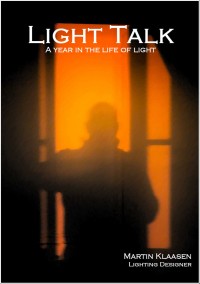The LED dimming saga
Singapore, 22nd August 2014
The saga related to LED dimming problems keeps on going. I think that by now we can safely say that E27/ E14 based LED lamps cannot be dimmed by commercial dimming systems. At least not properly to low dimming levels required for social environments. Further to spending time on site earlier this week, I spent another couple of hours to understand and clarify the actual situation as I should say that we did our due diligence but as it turns out we have been dealing with in my opinion incompetent and possibly inexperienced dimming “specialists” who should have flagged the potential issues miles away.
With the continuing problems with the dimming and fingers pointing to us as having specified the lamps I started my own investigation to understand what is going on. First of all I sent around an email to the team asking them to stop referring to this as a lamp issue as there is technically nothing wrong with the lamp. Similarly there is nothing technically wrong with the dimming system! The issue here is the compatibility between the lamp and the dimming system and whether the dimming system is properly attuned to dim LED lamps. One of the key things we learned today is that as a rough rule of thumb the inductive current of the lamp circuit for LED’s should not be more than 10% of the dimming system load. In our case the dimming system has a 10 Amp rating which means that the circuit rating should be maximum 1 Amp. With the lamp wattage known that tells you how many lamps you can drive/dim per circuit. The dimmer was originally spec’d at 20Amps but some wise heads decided to reduce it to 10 Amps to save costs. Did someone flag the issue of quantities? Did someone flag that there were too many lamps on one circuit …No! No-one did.
You can argue that we should have kept an eye on this but as far as I am concerned that’s why we talk to experts in dimming. We have dealt with this many times, explain how and what needs to be dimmed together, what the type and loading schedules are per circuit, etc. The dimming expert then works out what system, how many modules, what capacity, etc., as this varies per brand and type. No one from the dimming company ever flagged a problem, even not when we were all happily testing and scratching our head why we were having these problems.
After todays round of research I found that the module types specified are not specifically suitable for LED (WHAT??), that the dimming design and model specification show it is not suitable for dimming the quantities and loads that is required (REALLY??). In my opinion a red face embarrassment for the dimming company… Have a great weekend
Light watch 5-139: I took some illustrations from a fairly recent LED’s magazine article and a section of comparison tables from the actual dimmer manufacturer that show that they are fully aware.







 The long awaited book compilation of Martin's first year of blogging is available. Order now.
The long awaited book compilation of Martin's first year of blogging is available. Order now. Feedspot Top 100 Lighting Blogs
Feedspot Top 100 Lighting Blogs